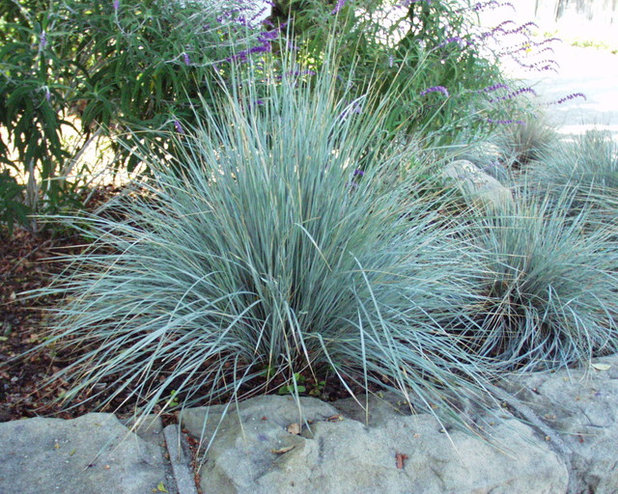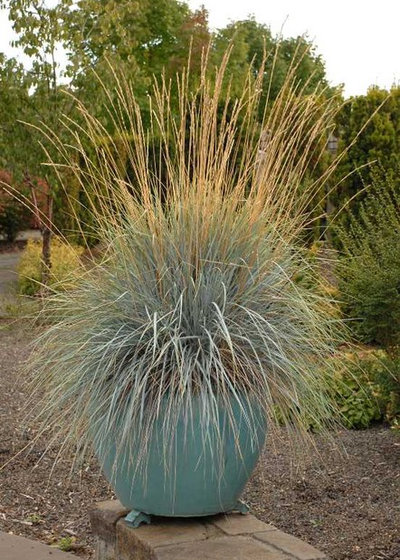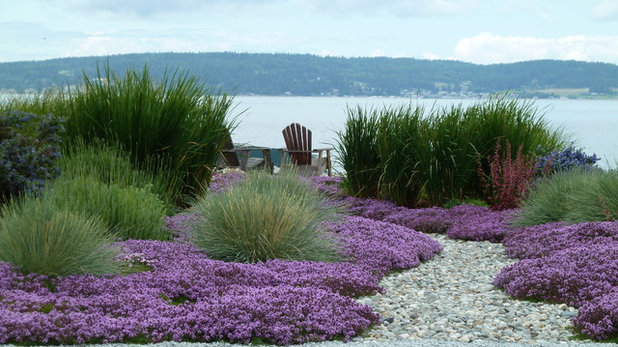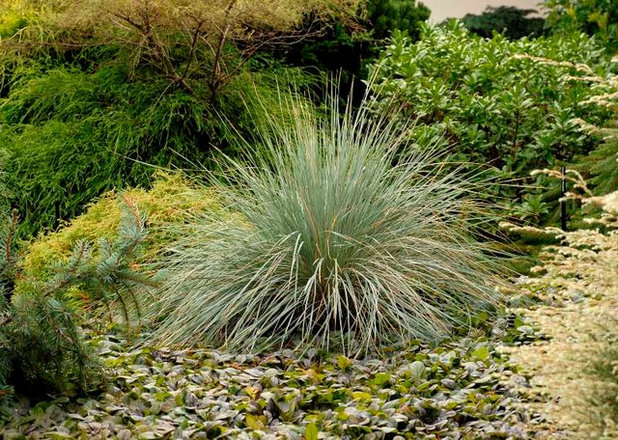While brilliant spring and summer colors awaken landscapes, and fiery fall color is a seasonal spectacle, sometimes you just need to cool down. Let's cool down with blue — blue oat grass, a must-know low-maintenance pick for calming color year-round.

San Marcos Growers
Botanical name: Helictotrichon sempervirensCommon name: Blue oat grass
USDA zones: 4 to 8; hardy to less than 0 degrees Fahrenheit (find your zone)
Water requirement: Occasional; drought tolerant
Light requirement: Full sun to light shade
Mature size: 2 feet tall and wide
Benefits and tolerances: Drought tolerant; deer resistant; can handle air pollution
Seasonal interest: Evergreen in temperate climates; flowers in summer
When to plant: Plant or divide in early spring

Missouri Botanical Garden
Distinguishing traits. Blue oat grass is spiky, spunky and blue — characteristics that invite comparisons to blue fescue.
From afar, its large clumps and projected flowers are commanding and regal, but up close they bend and sway in a soft way, with long blue-gray blades radiating out from the center.
A cool-season grass, blue oat grass thrives in mild temperatures but produces its strongest color in full sun. A towering crown of bluish-brown flowers projects about a foot above the foliage in summer, aging to a golden oat color in fall. And while the flowers create a spectacular show in summer, the pretty foliage is welcome in the garden all year.

Lankford Associates Landscape Architects
How to use it. This particular grass is a delight when massed, used in a container or used as an accent plant. The soft, fine evergreen foliage also creates a soft and soothing foundation for companion flowers.

Missouri Botanical Garden
Planting notes. With a little maintenance, well-draining soil and deep, infrequent waterings, you should be able to grow blue oat grass with ease. It produces its best color when it's planted in full sun. In too much shade, the grass clump may flop over.
Blue oat grass is considered evergreen, but in more extreme climates it may be considered semievergreen.
Every spring and fall, pull out dead growth with your hands or comb it out with a metal rake. In harsher climates a late-winter or spring trim can help keep your blue oat grass looking its best.
Do you use blue oat grass in your landscape? We'd love to see your photo in the Comments below.





